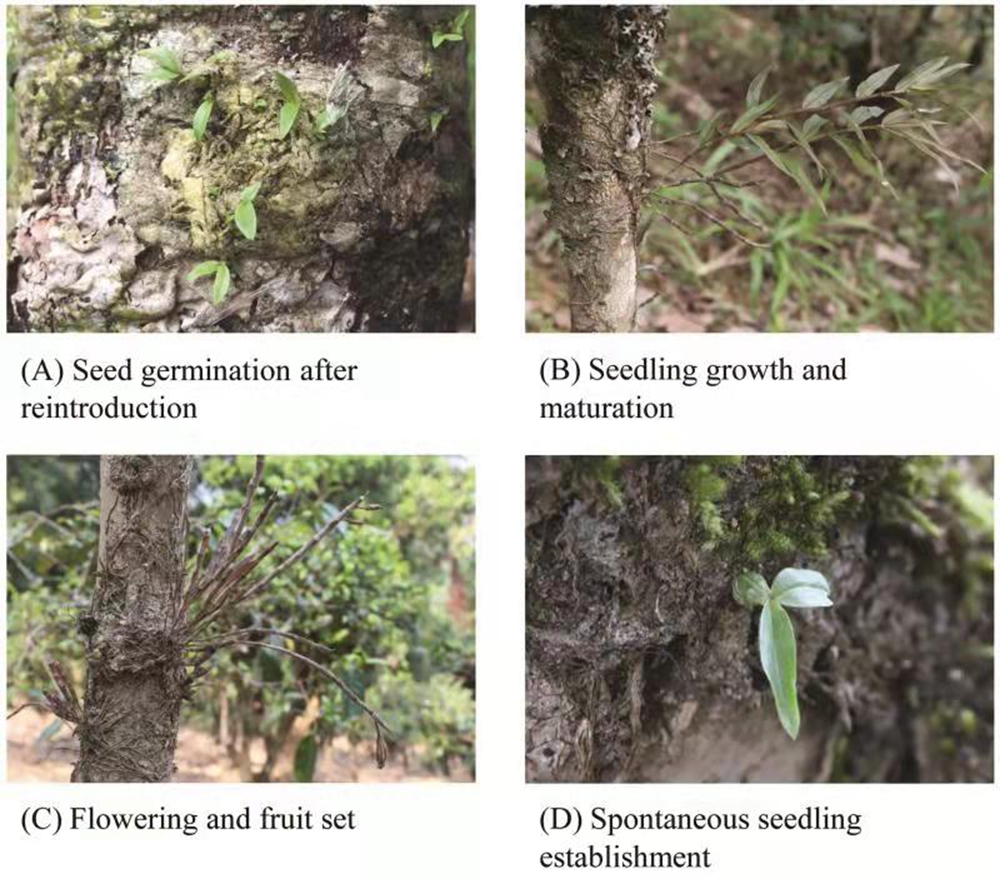Orchids represent a charismatic group of plant species that currently face a considerable number of threats to their long-term survival. Orchids produce thousands of dust-like seeds that may be easily dispersed by wind. However, due to their tiny size, seeds lack an endosperm and have become highly dependent on mycorrhizal fungi for germination and further development into a seedling.
Researchers from the Xishuangbanna Tropical Botanical Garden (XTBG) of the Chinese Academy of Sciences have recently developed a novel seed sowing technique called in situ symbiotic seed germination. In the experiment, orchid seeds were sown in the field simultaneously with a fungus that is able to induce seed germination. The mycelium of the fungus was mixed with agar powder.
Subsequently, the orchid seeds were evenly spread over this powder, gently mixed, and ultimately packaged to make sowing bags in paper packets. The sowing bags were soaked in water to retain moisture and then fixed on the trunk of trees using plastic wrap.
The novel methodology was tested for the first time with the epiphytic orchid Dendrobium devonianum, a medical and edible, dual purpose plant. An orchid population of >300 individuals had established within four years, of which the first individuals started to flower and produce seeds six years after the population was initiated. The first seedlings have established naturally.
"Our reintroduction method is very promising and it opens new avenues for setting up reintroduction programs for other epiphytic orchid species in China and elsewhere in the world," said SHAO Shicheng of XTBG.
When using in situ symbiotic seed germination, a fungus that is able to induce seed germination is artificially introduced in natural environments. Currently, no evidence has indicated that introduction of germination-enhancing fungi negatively affects the abundance of native orchid mycorrhizal fungi.
"The developed methodology can easily be expanded to other epiphytic orchid species to alleviate the pressure of over-collection, but this requires detailed knowledge of the mycorrhizal fungi promoting seed germination," said LUO Yan of XTBG.
The study entitled "Successful reintroduction releases pressure on China’s orchid species" was published as a spotlight in Trends in Plant Science.

Orchid reitroduction in Xishuangbanna. (Image by SHAO Shicheng)





